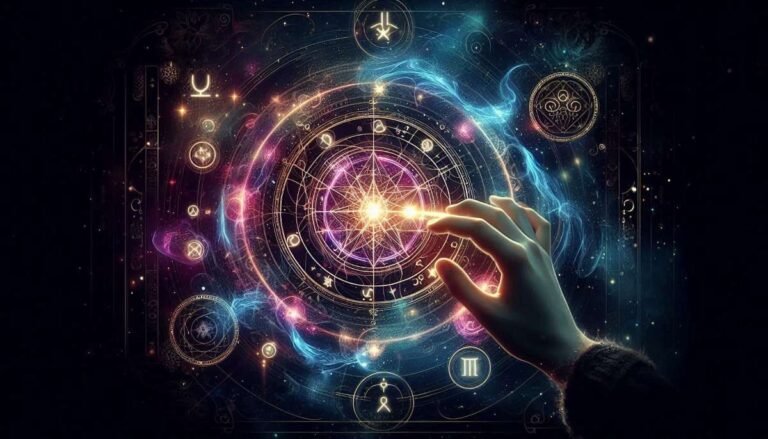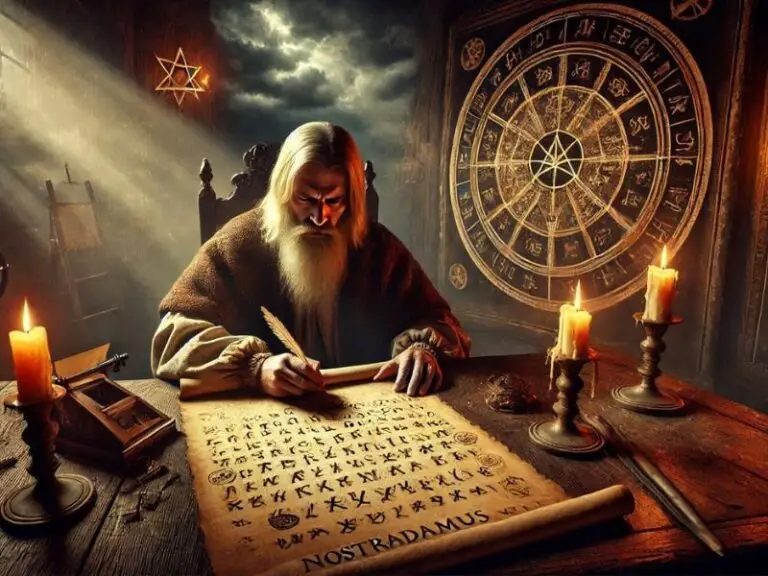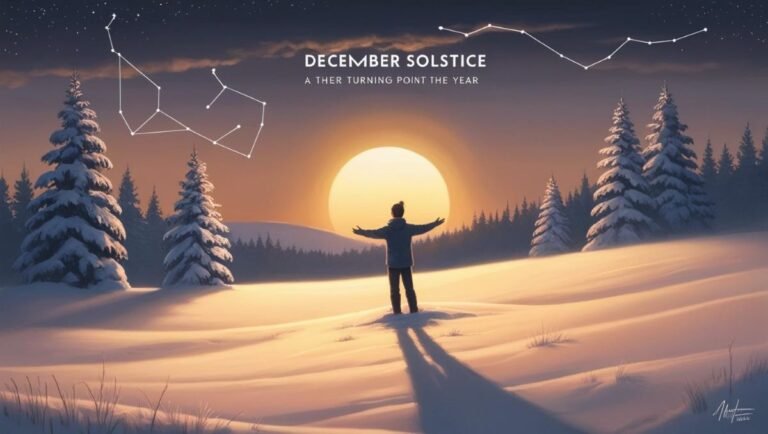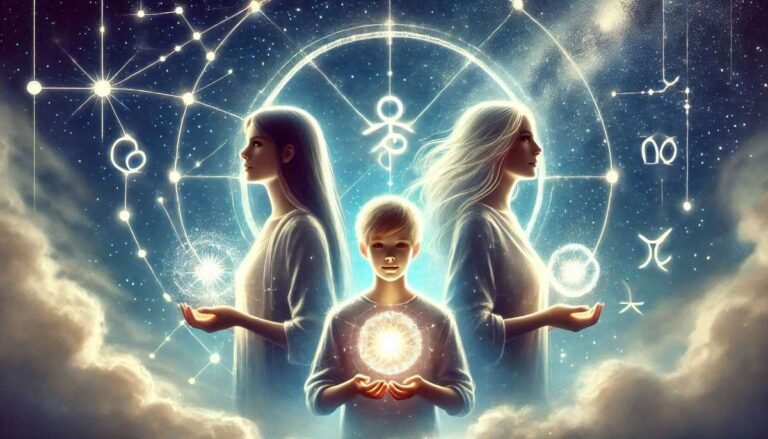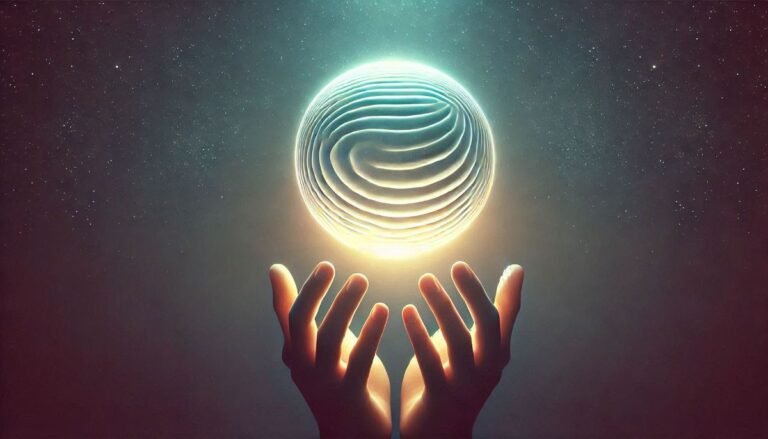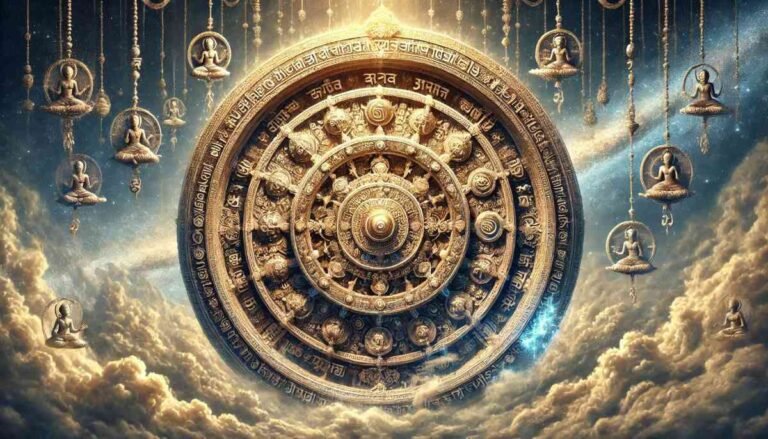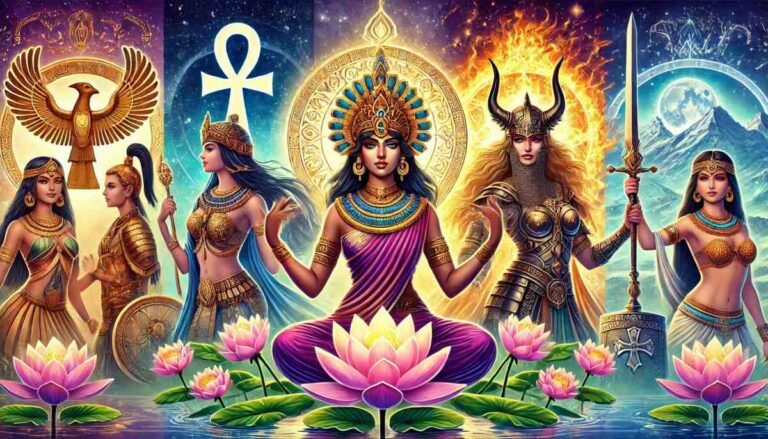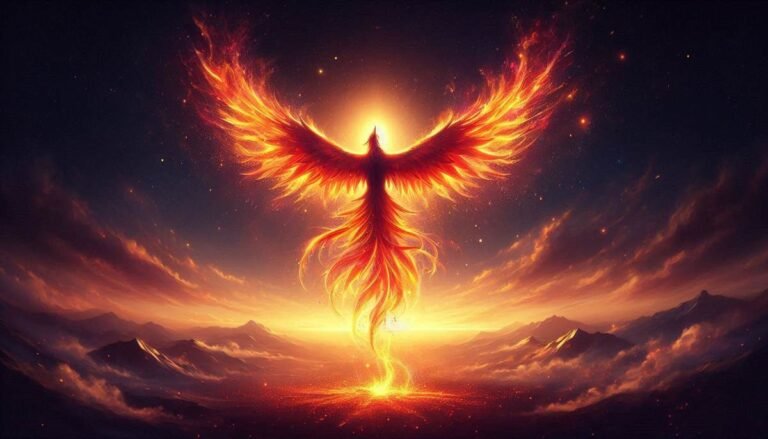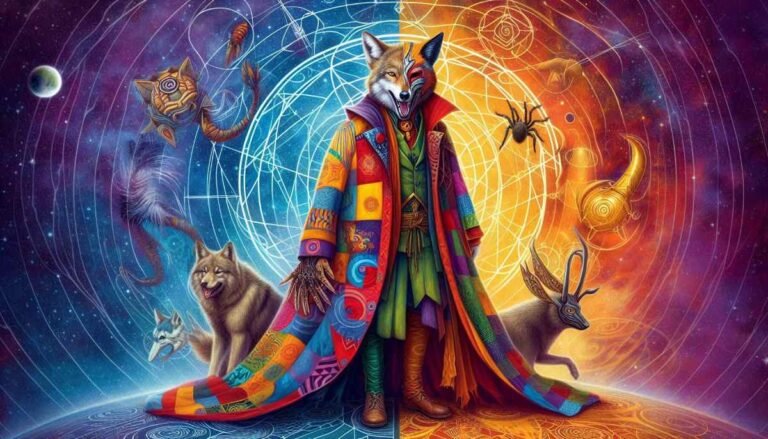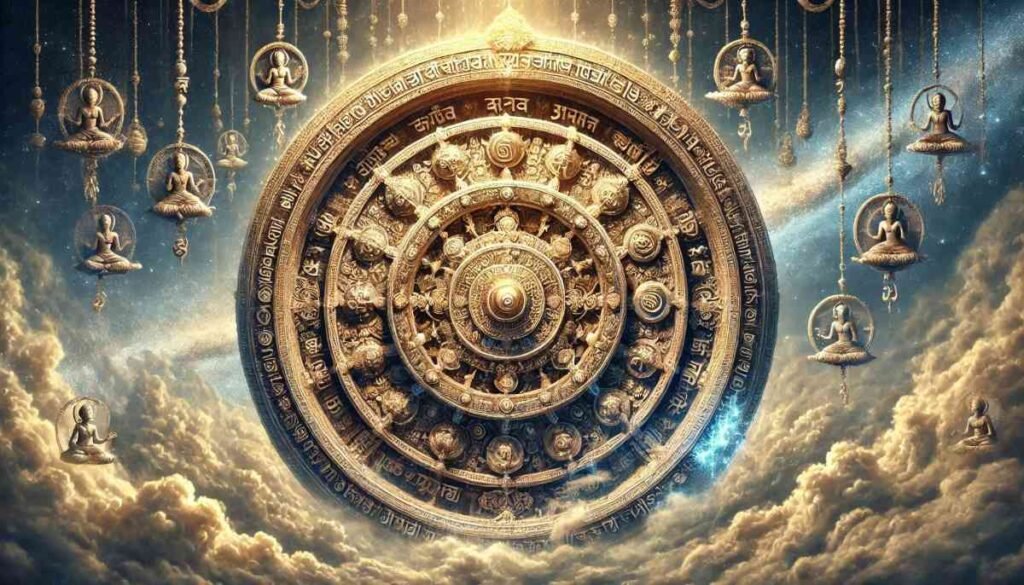
Hindu mythology is an intricate tapestry of stories, symbols, and philosophies that delve deeply into life’s mysteries. Among its most profound concepts is the Wheel of Dharma, which represents the eternal cycle of birth, death, and rebirth, or samsara. This cycle is governed by karma and ultimately leads to liberation (moksha), but not without immense spiritual effort. In this blog, we’ll explore how the Wheel of Dharma serves as a spiritual framework for understanding reincarnation, the karmic threads that bind us, and the lessons we can draw from this ancient philosophy.
Table Of Contents
- The Concept of the Wheel of Dharma in Hinduism
- Reincarnation: The Soul’s Journey Through Lifetimes
- The Role of Karma in Reincarnation
- Mythological Stories Illustrating Reincarnation
- Breaking Free From the Wheel: Liberation and Moksha
- The Symbolism of the Wheel in Mythology
- The Psychological Insights of Reincarnation
- Lessons From the Wheel of Dharma
- Reincarnation in Modern Spirituality
- Connecting With the Wheel of Dharma in Daily Life
- The Universality of Life’s Cycles
- Final Thoughts
The Concept of the Wheel of Dharma in Hinduism
At the heart of Hindu cosmology lies the Wheel of Dharma, symbolizing life’s cyclical nature. It represents samsara, the endless cycle of reincarnation that binds every soul. The driving forces behind this wheel are:
- Karma: The law of cause and effect, determining the quality of one’s rebirth.
- Dharma: The moral and spiritual duties one must fulfill to progress spiritually.
- Maya: The illusion of the material world, which traps the soul in the cycle.
The ultimate goal is liberation (moksha), achieved by aligning one’s actions with dharma and breaking free from karma’s grasp.
Reincarnation: The Soul’s Journey Through Lifetimes
1. What Is Reincarnation?
Reincarnation, or punarjanma, is the belief that the soul is eternal and takes on various physical forms across lifetimes. Each rebirth is shaped by the accumulated karma of past lives.
2. Why Does the Soul Reincarnate?
The soul reincarnates to resolve karma and attain spiritual growth. Until the soul achieves enlightenment and liberation, it remains bound to the Wheel of Dharma.
This cyclical nature of existence parallels the patterns observed in human history, as explored in The Rise and Fall of Ancient Civilizations: What Lessons Do Ancient Empires Teach Us Today.
The Role of Karma in Reincarnation
Karma is central to the Wheel of Dharma. It is often misunderstood as mere punishment or reward, but in reality, karma is a neutral force, reflecting the energy of one’s actions:
- Positive Karma: Actions rooted in compassion, honesty, and selflessness lead to favorable rebirths.
- Negative Karma: Actions driven by greed, anger, or ignorance result in challenges in future lifetimes.
By understanding karma, individuals can take conscious steps toward balancing their karmic accounts, as seen in myths and teachings of Hindu deities.
Mythological Stories Illustrating Reincarnation
Hindu mythology is rich with stories that reveal the nuances of reincarnation and karma:
1. King Bharata’s Rebirth
King Bharata, a devoted ruler, becomes overly attached to a deer during his lifetime. As a result, his karma leads him to be reborn as a deer in his next life, teaching the dangers of misplaced attachments.
2. The Story of Savitri and Satyavan
Savitri, a devoted wife, outwits Yama, the god of death, to reclaim her husband’s life. This story emphasizes dharma’s role in overcoming life’s cycles.
3. Shiva and the Cosmic Dance
Shiva’s tandava (cosmic dance) represents the endless cycles of creation, preservation, and destruction. It encapsulates the very essence of reincarnation and the impermanence of existence.
Breaking Free From the Wheel: Liberation and Moksha
1. What Is Moksha?
Moksha is the ultimate goal of Hindu philosophy—a state of liberation where the soul transcends the cycles of birth and death.
2. How Is Moksha Achieved?
Moksha requires:
- Self-Realization: Understanding that the soul (atman) is one with the ultimate reality (Brahman).
- Karma Yoga: Selfless action aligned with dharma.
- Jnana Yoga: The pursuit of knowledge and wisdom.
- Bhakti Yoga: Devotion to a higher power.
By practicing these spiritual paths, one can break free from the illusions of maya and the entanglements of karma.
The Symbolism of the Wheel in Mythology
The wheel is a recurring symbol in many mythologies, not just Hinduism. It often represents cyclical time and the interconnectedness of all things:
- In Buddhism, the Wheel of Dharma represents the Eightfold Path to enlightenment.
- In Norse Mythology, Yggdrasil, the world tree, symbolizes the cycles of life, death, and rebirth.
- In Greek Mythology, the spinning wheel of the Moirai (Fates) weaves the destiny of humans.
This universal symbolism ties back to the Trickster Archetype: Understanding Its Role in Various Mythologies, which often disrupts and resets the natural cycles of life.
The Psychological Insights of Reincarnation
1. Healing Through Past-Life Regression
Modern spiritual practices like past-life regression therapy draw on the concept of reincarnation to address unresolved traumas and karmic imbalances.
2. Understanding Patterns in This Life
Reincarnation can explain repetitive patterns, relationships, or challenges in one’s life, offering a broader perspective on personal growth.
Lessons From the Wheel of Dharma
The Wheel of Dharma offers timeless lessons applicable to all aspects of life:
- Embrace Impermanence: Life’s cycles are ever-changing, and accepting this truth brings peace.
- Live With Intention: Align actions with your highest values to create positive karma.
- Seek Balance: Like the wheel’s rotation, balance is key to navigating life’s ups and downs.
Reincarnation in Modern Spirituality
Reincarnation is not confined to ancient beliefs; it continues to influence modern spirituality. Practices like yoga, meditation, and mindfulness draw on these ancient principles to help individuals connect with their higher selves and transcend life’s cycles.
Connecting With the Wheel of Dharma in Daily Life
- Meditation: Reflect on your actions and intentions to align with dharma.
- Mindful Living: Be present in your daily activities, cultivating positive karma.
- Spiritual Study: Explore scriptures and teachings that deepen your understanding of reincarnation.
The Universality of Life’s Cycles
While the Wheel of Dharma is rooted in Hinduism, its themes resonate across cultures. From the Mayan calendar’s cycles to the eternal return in Nietzsche’s philosophy, humanity has always sought to understand life’s cyclical nature.
Exploring these patterns in history, as seen in The Rise and Fall of Ancient Civilizations: What Lessons Do Ancient Empires Teach Us Today, reinforces the interconnectedness of all existence.
Final Thoughts
The Wheel of Dharma is more than a symbol—it’s a guide to understanding life’s intricate cycles and the soul’s eternal journey. By embracing its wisdom, we can navigate the challenges of life, resolve karmic debts, and strive for liberation.
Life’s cycles may be endless, but within them lies the opportunity for profound transformation and spiritual growth. What will your next turn on the Wheel of Dharma reveal?
